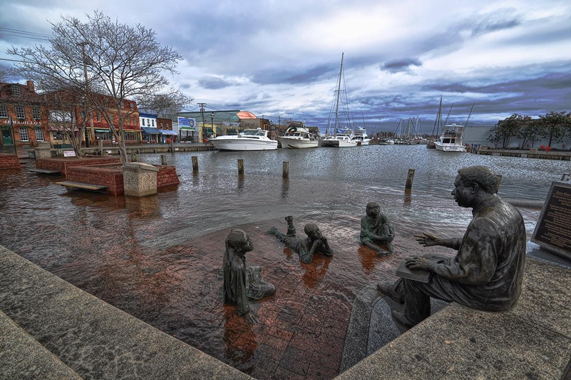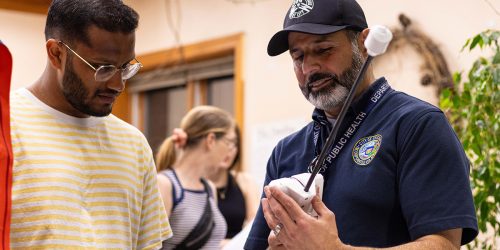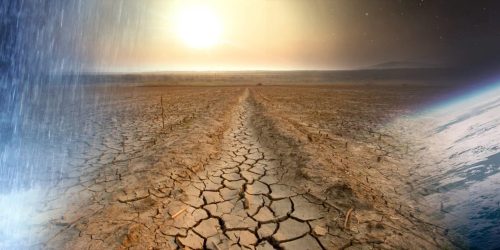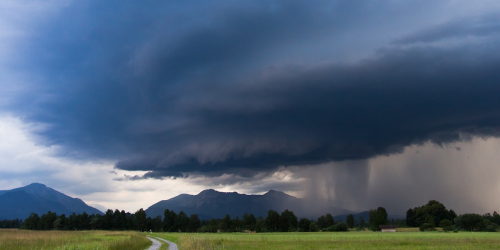In partnership with the NOAA National Marine Fisheries Service Office of Science and Technology, NOAA’s Modeling, Analysis, Predictions, and Projections (MAPP) Program is funding 8 new three-year projects to enhance our nation’s capability to produce seasonal predictions of coastal high water levels and living marine resources. The competitively funded projects include $3.9 million in grants and $0.9 million in other awards (for a total of $4.8 million).

NOAA strives to increase the resilience of communities to changing climate and ocean conditions through improved products and services that provide reliable climate-related information. Recent climate trends have increased the vulnerability of many U.S. communities to coastal flooding and have caused changes in the distribution and abundance of living marine resources. In addition to longer-term trends, natural seasonal variations such as the El Nino-Southern Oscillation (an alternating pattern of abnormally warm and cool sea surface temperatures in the tropical Pacific Ocean) can also affect sea levels and ocean temperatures, and ultimately coastal communities, fish stocks, and other marine life. Given the increasingly recognized link between seasonal changes in coastal ocean conditions and potentially predictable sources of climate or ocean variability, the 8 new projects aim to leverage this relationship to develop seasonal predictions of coastal high water levels and changes in living marine resources.
The new projects will provide foundational elements to increase the resiliency of coastal communities and economies, supporting the missions of NOAA’s National Ocean Service and National Marine Fisheries Service. These groups prioritize improved coastal intelligence through products and services, and increased production and use of climate-related information in fisheries management and conservation, respectively. In addition, the funded research will complement international efforts such as the Coastal Inundation Forecasting Demonstration Project, under the umbrella of the WMO-Intergovernmental Oceanographic Commission Joint Technical Commission for Oceanography and Marine Meteorology.
The 8 new projects 1 to be funded by the MAPP Program in 2017 are:
- Downscaled Seasonal Forecasts for Living Marine Resource Management of the U.S. West Coast
- Lead PI: Michael Jacox (University of California, Santa Cruz)
- Co-PIs: Michael Alexander (NOAA/ESRL), Steven Bograd (NOAA/Southwest Fisheries Science Center), Christopher Edwards (University of California Santa Cruz), Jerome Fiechter (University of California Santa Cruz), Elliott Hazen (NOAA/Southwest Fisheries Science Center), Samantha Siedlecki (University of Washington)
- Probabilistic Seasonal Prediction of the Distribution of Fish and Marine Mammals in the Northeast U.S.
- Lead PI: Lesley Thorne (Stony Brook University)
- Co-PIs: Janet Nye (Stony Brook University), Hyemi Kim (Stony Brook University)
- Seasonal Forecasting Applications for Ecosystem Based Fisheries Management in the Eastern Bering Sea
- Lead PI: Kerim Aydin (NOAA/Alaska Fisheries Science Center)
- Co-PIs: Albert Hermann (University of Washington), Phyllis Stabeno (NOAA/Pacific Marine Environmental Laboratory), Michael Alexander (NOAA/ESRL)
- Multi-Model Seasonal Sea Level Forecasts for the U.S. Coast
- Lead PI: Mark Merrifield (University of Hawai’i at Manoa)
- Co-PIs: Matthew Widlansky (University of Hawai’i at Manoa), Philip Thompson (University of Hawai’i at Manoa), H. Annamalai (University of Hawai’i at Manoa), Arun Kumar (NOAA/CPC), William Sweet (NOAA/CO-OPS), Eric Leuliette (NOAA/STAR), John Marra (NOAA/NCEI), Gary Mitchum (University of South Florida)
- Development and Evaluation of a Seasonal-to-Interannual Statistical Forecasting System for Oceanographic Conditions and Living Marine Resources on the Northeast U.S. Shelf
- Lead PI: Young-Oh Kwon (Woods Hole Oceanographic Institution)
- Co-PIs: Ke Chen (Woods Hole Oceanographic Institution), Glen Gawarkiewicz (Woods Hole Oceanographic Institution), Terry Joyce (Woods Hole Oceanographic Institution), Janet Nye (Stony Brook University), Jon Hare (NOAA Northeast Fisheries Science Center), Paula Fratantoni (NOAA Northeast Fisheries Science Center), Vincent Saba (NOAA Northeast Fisheries Science Center), Tim Miller (NOAA Northeast Fisheries Science Center)
- Using a Synoptic Climatological Framework to Assess Predictability of Anomalous Coastal Sea Levels in NOAA High Priority Areas
- Lead PI: Scott Sheridan (Kent State University)
- Co-PIs: Cameron Lee (Kent State University), Doug Pirhalla (NOAA Coastal Services Center), Varis Ransibrahmanaku (NOAA/NCCOS)
- Understanding and Quantifying the Predictability of Marine Ecosystem Drivers in the California Current System
- Lead PI: Arthur Miller (Scripps Institution of Oceanography)
- Co-PIs: Antonietta Capotondi (NOAA/ESRL/PSD), Emanuele Di Lorenzo (Georgia Institute of Technology)
- Experiments with Seasonal Forecasts of Ocean Conditions in the Pacific Northwest to Aid the Crab Fishery
- Lead PI: Samantha Siedlecki (University of Washington)
- Co-PIs: Issac Kaplan (NOAA Northwest Fisheries Science Center), Nicholas Bond (University of Washington), Al Hermann (University of Washington), Jan Newton (University of Washington), Mike Alexander (NOAA/ESRL), Simone Alin (NOAA PMEL)
1At the time of publication, all awards may not have been accepted by recipient institutions





